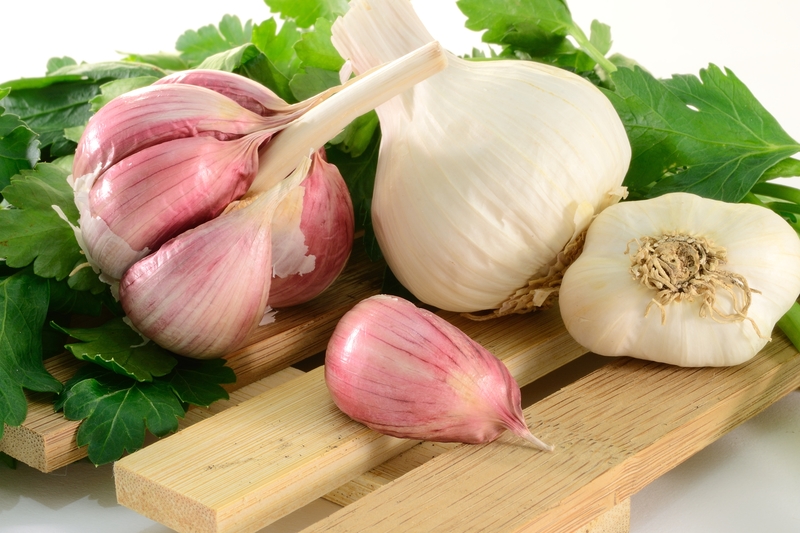As with any new addition to your garden, you must do your research to ensure the success of the harvest. Luckily, the guide to growing garlic is below!
What's the Best Garlic to Plant in My Garden?
The best option for growing garlic is to get some garlic bulbs from a local grower. That way you know you have garlic stock that is adapted to your climate.
What are the Different Types of Garlic?
Hardneck or stiffneck garlic (Allium sativum var. ophioscorodon) has a stiff stem surrounded by a ring of cloves. Stiff neck varieties are often more hardy. I grow a stiff neck type in my northeast Wisconsin garden. Southern Seed Exposure recommends stiffneck types for areas from Virginia northward.
Softneck garlic (Allium sativum var. sativum) has a smaller, flexible central stem, often surrounded by layers of cloves. This is the type that can be braided, and these are also the types that are typically sold in the grocery store. They tend to produce larger yields than hardneck types, but may be less cold hardy.
Elephant garlic (Allium ampeloprasum) is not really a garlic at all, but a type of leek. It has a few large cloves and mild flavor that some people like and others do not.
When to Plant Garlic
Garlic is planted in fall, typically after first frost has hit but before the soil has frozen completely.
How to Grow Garlic – Planting
- Your planting area should get at least 5 hours of sun.
- Soil pH should be neutral to slightly acidic (6-7).
- Work the planting area thoroughly, digging in some compost or well rotted manure (not fresh manure!).
- Plant cloves six inches apart, 2-3 inches deep.
If your soil is very light and fluffy, you may be able to stuff the cloves right into the dirt with your bare hands. My preferred method is to dig trenches across the width of the bed. I then place individual cloves about six inches apart down the length of the row. Cover the cloves with soil and gently tamp down the earth.
Mulching Garlic
Before the ground freezes, cover your garlic patch with a nice thick layer of straw or leaves.
In spring, you can pull back the mulch to warm the soil and speed growth, and top dress with more compost if you have some available.
Once the soil has warmed, I generally put some mulch back in place to keep weeds down and hold in moisture. Garlic doesn't need much watering unless it is very dry.
How and When to Harvest Garlic
Hardneck garlic will produce flower stalks called scapes in late spring. It's best to remove these to increase the size of the main bulb.
Harvesting Garlic Bulbs
Garlic bulbs should be harvested in late summer when the lower leaves start to turn yellow and/or the tops tip over. If you wait until the tops are entirely brown, the papery covering of the bulbs will get thin and the bulbs are more likely to fall apart in storage instead of staying like nice, attractive bulbs.
Loosen the dirt with a good garden fork and gently lift the bulbs from the ground. Unless your soil is really loose, just trying to pull the bulbs by the stems is likely to leave you with a bulb still in the ground and a handful of stem. (Not that I would ever do this…ahem…)
Harvesting Garlic Bulbs – Curing for Longer Term Storage
Curing is simply the process of removing excess moisture and toughening the outer skin of the bulb. Spread the bulbs in a single layer in a dry area with good air circulation. Stems can crisscross, but don't stack the bulbs. I like to spread mine out in my greenhouse and cover them with a piece of burlap. Avoid large amounts of direct sunlight to prevent sunscald.
Let the garlic bulbs cure until the skins are dry and the necks are tight.
Once the garlic bulbs are dry, brush off loose dirt and outer layers of skin and dirt. Clip the tops and store them in a bin in a cool, dry location out of direct sunlight. Remember to save your biggest bulbs to replant.
Have you grown garlic before? What other tips do have for planting, harvesting and storing it?
Article Source: Common Sense Home
